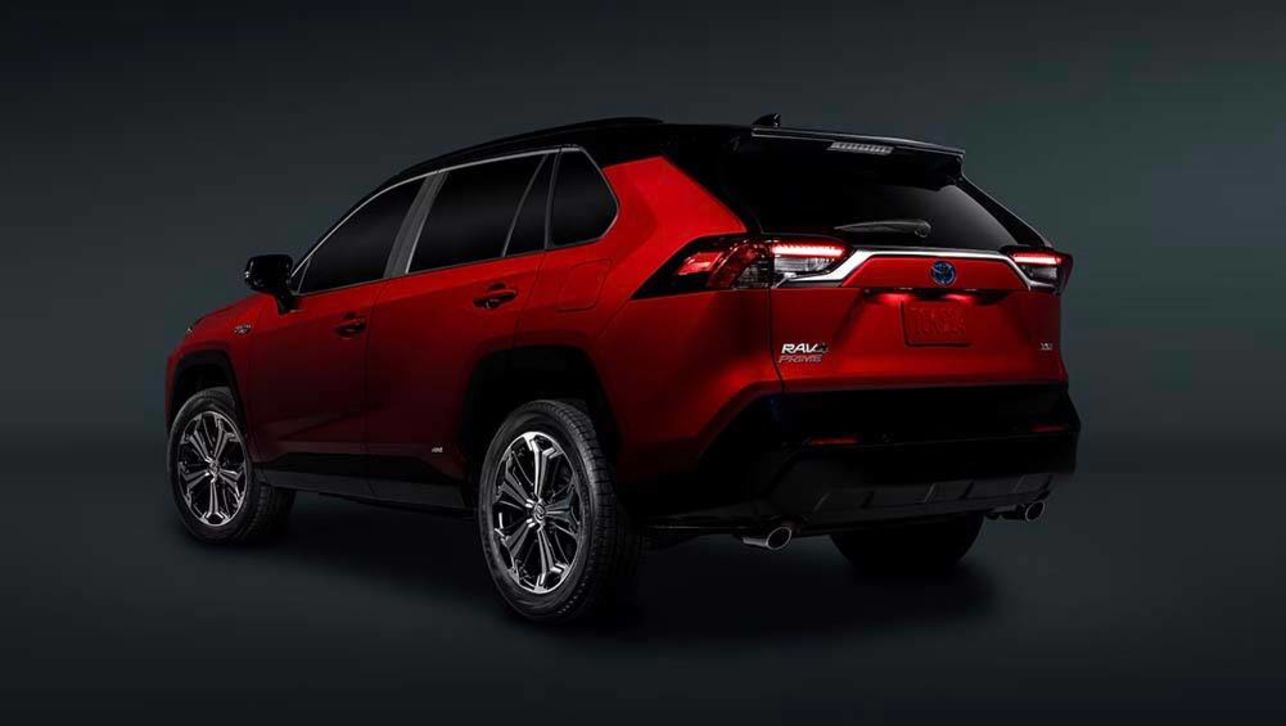Toyota’s perceived ‘wait and see’ approach to electrified vehicles outside its traditional plugless hybrids has brought with it pros and cons, but the brand is starting to see first-hand whether that’s paid off.
The just-launched Toyota bZ4X electric car has sold 385 units so far as of the end of April (208 of those were in February) but Australians bought 31,662 new electric cars in the same period. Even considering almost half of those are Teslas and about 6000 are BYD’s, Toyota has a long way to go when it comes to market share.
Toyota’s overall Australian market share is an impressive 19.2 per cent, while Ford in second and Mazda in third sit at 7.8 and 7.7 per cent respectively. Those brands also share something similar in Australia - a very small electric car footprint.
So are they doing something right? Is the ‘wait and see’ approach working, or are they waiting too long to get on the EV train?
Or is there another step companies like Toyota are looking to take before committing to going full-gas on EVs?
Toyota Vice President of Sales, Marketing and Franchise Operations Sean Hanley has told CarsGuide multiple times in the past few years that he believes plug-in hybrids are set to massively accelerate in popularity over the next couple of years.

"If you had asked me five or seven years ago about plug-ins, I might have said something like, 'I'm not sure Australia's ready to plug in yet'. There are reasons for that, because the technology just wasn't quite there at that point," Hanley told us in an interview in November 2023.
"If you asked me [now] about plug-in, I would say to you 'actually, there are some significant benefits for a plug-in hybrid right now'."
"One is the battery technology has improved and you're getting better range on battery only. I'm not talking zero to 40 either. You're getting 200 kilometres potentially, of battery-only power, and then you get the benefit of the normal hybrid engine," he said.

More recently, at the launch of the Toyota C-HR this year, Hanley backed his previous comments again by saying hybrid as a technology still has room for improvement, even after being refined (by Toyota in particular) over the past two decades.
“I think hybrid technology generally will be accelerated,” Hanley told CarsGuide.
When asked if he was including plug-in hybrid in that statement, he confirmed.

“I think plug-ins will definitely increase in volume and sales. That will be largely the result of the products coming to market.”
The Toyota executive’s suggestion that availability (rather than market demand) will be the determining factor is at odds with the rapid increase in uptake of PHEVs in Australia, and also with the fact Toyota Australia doesn’t currently offer one.
For the entirety of 2022, Australians bought 5275 new PHEVs. Last year, that more than doubled to 11,212. This year, to the end of April, that figure is already 4,726 - last year it was only 42.4 per cent of that.

If Toyota is to get in early on the PHEV rise (as it did with traditional hybrids so long ago), especially if it is in fact “the result of the products coming to market”, shouldn’t it have at least one in its line-up?
The recently launched C-HR is available with a plug-in hybrid in Europe, the only other market the C-HR is sold, and even Toyota’s immensely popular RAV4 SUV has a PHEV version in markets like North America. Then there are models we don’t get in Australia like the Prius and Crown, both available with PHEV variants.
So why not here?
When asked if the reason for leaving the C-HR PHEV off the table for Australia was there wasn’t clear demand for the product, Hanley said the perceived benefits of electrification are better served by traditional plugless hybrids for now.

“Just at the moment, our market in Australia has a wonderfully strong and loyal understanding and engagement with hybrid electric vehicles and hybrid drive vehicles from Toyota, where the strength of that technology has been its practicality, capability, and of course, the benefits it gives at the pump. It just so happens it does reduce its carbon as well.”
Hanley said the environmental benefits of hybrid vehicles, while still a factor, are lower on the list than elements like cost and convenience.
“The consumer sees, first of all, it's affordable. Second of all, there's no compromise and adjustments I have to make to my life to drive it," said Hanley.
“Third, by the way, it's cheaper to run. Fourth, occasionally they understand that it is reducing their CO2 emissions.
“So it's all about those four aspects, the three top three being the heaviest," he said.

“That's what the Australian consumer understands. However, as we evolve and battery technology evolves, there will be certain benefits that PHEV can offer that will also fit into those top three categories.
“Eventually, we'll have plug-in hybrids. What variants? We will have to decide.”
Interestingly, recent reports from China suggest that the brand is about to begin using tech borrowed from its joint venture partner BYD to build new plug-in hybrid models, likely just for China in the early stages, over the next couple of years.
While Hanley is keeping relatively quiet about specific plans, Toyota might just be playing the ‘wait and see’ game here too, until PHEV technology is at a point where the brand feels it’s mature enough to implement without too many drawbacks.
Watch this space.




-2.jpg)


.jpg)

.jpg)
.jpg)


.jpg)
.jpg)

.jpg)
.jpg)

.jpg)

.jpg)

.jpg)
_0.jpg)



.jpg)
.jpg)

Comments